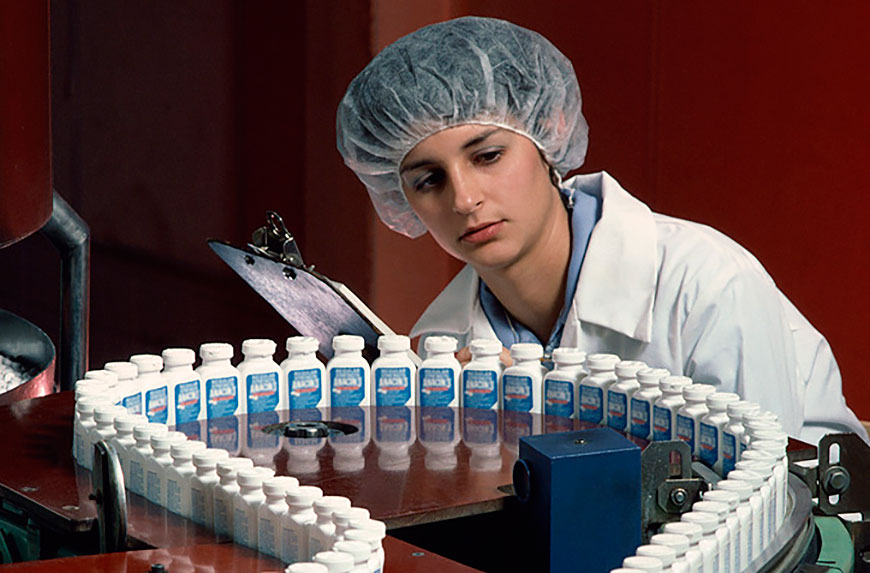
The harmonisation of Good Manufacturing Practice (GMP) and more recently of Good Distribution Practice (GDP) is at the very heart of PIC/S. The development and promotion of high and harmonised GMP standards and guidance documents has been a key focus since the start. The reason is obvious: to accept inspection results or have a GMP system equivalent to other PIC/S Members, you need to rely on common standards.

The main reasons for adopting common standards are (i) to ensure the maintaining of high standards of quality assurance in the development, manufacture and control of medicinal products; (ii) to promote uniformity in licensing decisions; (iii) to promote consistency and uniformity of inspections and (iv) to facilitate the removal of barriers to trade in medicinal products. The main instrument for harmonisation has been the PIC/S GMP Guide, which PIC/S is striving to keep equivalent in terms of GMP requirements with the EU GMP Guide, which involves close co-operation with the European Medicines Agency (EMA).
The main instrument for harmonisation has been the PIC/S GMP Guide (see “Publications”). Originally, the latter derived from the WHO GMP Guide and was further developed in order to comply with stringent manufacturing and health requirements in PIC/S countries, to cover new areas (e.g. biologicals, radiopharmaceuticals, etc.) and to adapt to scientific and industrial technology (e.g. biotech, parametric release etc.).
In the late 1980s / early 1990s the PIC/S GMP Guide was adopted by the EU and further developed in close co-operation with PIC/S. Since that time, the EU and the PIC/S GMP Guides have been developed in parallel and whenever a change has been made to one, the other has been amended so that both Guides are practically identical. The Guide (or equivalent) is applied many countries around the world - and not only in Europe.
The PIC/S GMP Guide for Medicinal Products is almost identical to the EC GMP Guide; the main differences are that the PIC/S GMP Guide uses the term “authorised person” (rather than the term “Qualified Person” in the EC GMP Guide) and that references to EU Directives have been removed from the PIC/S GMP Guide.
The PIC/S Committee adopted a Guide on Good Distribution Practice (GDP), which entered into force on 1 June 2014 (see “Publications”). The PIC/S GDP Guide is based on the EU GDP Guide and was adapted to PIC/S’ needs by the PIC/S Expert Circle on GDP. While the EU GDP Guide is legally binding in the EU/EEA, the PIC/S GDP Guide is a voluntary guidance document in PIC/S, as not all PIC/S Participating Authorities are competent for GDP inspections.
The GDP Guide lays down appropriate tools to assist wholesale distributors in conducting their activities and to prevent falsified medicines from entering the legal supply chain. Compliance with these guidelines will ensure control of the distribution chain and consequently maintain the quality and the integrity of medicinal products.
In addition to the GMP and GDP Guides, PIC/S has also been a pioneer in developing a number of guidelines and guidance documents such as the Site Master File, the Recommendation on Quality System Requirements for Pharmaceutical Inspectorates, the GMP Guide for Blood Establishments and the first Guideline for the Manufacture of Active Pharmaceutical Ingredients (APIs), which has served as a basis for the (ICH Q7A) Guide on APIs and which has become Part II of the GMP Guide (see “Publications”).
The SCH is in charge of all PIC/S activities in the field of harmonisation of GM(D)P. It is currently chaired by Ms Ying-Hua (Ellen) Chen (Chinese Taipei / TFDA). The mandate of the SCH is to harmonise GM(D)P, establish best inspection practices and harmonise the interpretation of GM(D)P to ensure consistency in inspection / audit practices. For the complete mandate, see box below.
The full mandate of the SCH is
|
Current PIC/S Working Groups active in the field of GMDP harmonisation include:
The annual PIC/S Seminars usually result in the formation of a PIC/S Working Group to develop GMP guidance documents or new / amended Annexes to the PIC/S GMP Guide.
Other Working Groups can be established by the PIC/S Committee, which appoints all Working Groups with a specific mandate. The Working Groups reports to the relevant Sub-Committees (under the PIC/S Committee). Once the output is ready for adoption, it is submitted to the PIC/S Committee.
All PIC/S Guidance documents are available free of charge at "Publications". This includes latest published guidance documents and current draft guidance documents under public consultation.